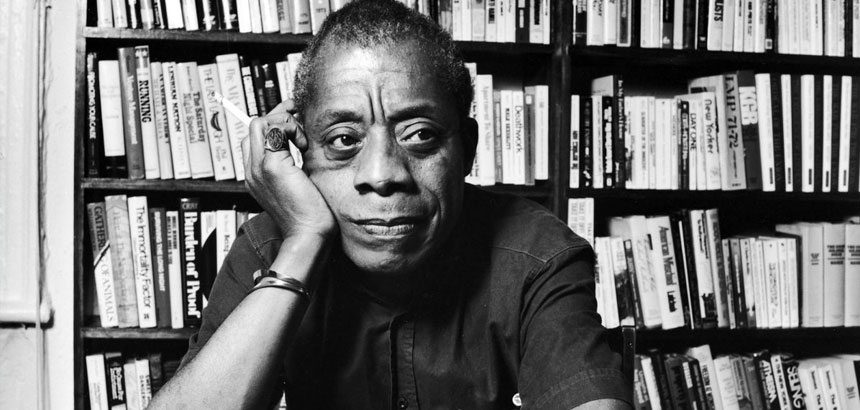Let’s make a canon! And let’s fill it with queer art, or queer-ish art, or art that has no idea how fucking queer it is. Queer art is often secret art: black-market, whispered-about, read-between-the-lines art. And since secret art can be hard to find, let’s shine a light on a few of our favourite things so all our friends can see them.
We’ll call it a canon, because it sounds Weighty and Important and Serious, but we also won’t be too serious about it. We won’t make The Canon, just a canon. Each month, we’ll chat with a different queer-about-town and ask them to submit something to the canon. And they’ll tell us what that book or play or movie or TV episode or sculpture or poem or dance piece or opera or photograph or painting or performance art piece or anything else means to them and why they think it deserves a spot in our illustrious canon.
This month, we talked to multidisciplinary artist Jordan Tannahill about James Baldwin’s 1956 novel Giovanni’s Room.
Giovanni’s Room! Tell us about it!
Giovanni’s Room! Well, Baldwin definitely has to be in the canon. He’s just such a major voice. In literature in general, but of course in queer literature. He really blew open the door with Giovanni’s Room in 1956 with his rendering of an American in Paris searching for connection, love, and intimacy, and his trials and tribulations with Giovanni, who’s an Italian he meets in a Parisian bar. What’s so interesting about Baldwin is that, of course, he’s a major voice on race as well as on sexuality. He’s such a visionary and I love that he was best friends with Nina Simone and was so involved in the civil rights movement. He was just such a bad ass.
So when did you find the book?
I read the book in high school, in grade ten. And that was perfectly timed with my adolescent preoccupation with unrequited love and longing. Previous to that I had kinda read a lotta online gay erotica. So, here was this literature that was so advanced, so beautifully rendered that was about gay themes, which was really exciting for me. And actually, when I was in Paris, I went to Shakespeare & Company—this was just last year, or maybe two years now—I went to Shakespeare & Company and bought a copy of Giovanni’s Room, cause previously I’d just read it in the library. And I actually struck up a summer romance with a Lithuanian boy who told me his favourite book was Giovanni’s Room—and I just happened to have a copy in my knapsack!
What a talisman!
I know, right? It’s the milkshake! So, that book feels like a book that you can return to at many different times in your life.
What have you found that’s different in it from when you first read it? What’s changed?
I think initially I was really drawn to the tragedy and longing in it. I kind of assumed that all gay romances were tragedies. That’s a narrative we’re really fed as young adults.
Oh, for sure! That’s everywhere!
Especially, like, early 2000s. I think now there are new narratives emerging that give us new options for romance. But now, I don’t see Giovanni’s Room as a portrait of tragic love; I actually see it much more as a portrait of a kind of a sort of man with wanderlust; a kind of nomad; a wandering soul; a spirit. And sexuality is just one part of his existential wanderings.
What do you think the queers of tomorrow can find in Giovanni’s Room? If we’re preserving it in this canon…
They can find, first of all, just absolutely evocative writing and beautifully rendered characters. And I think there are timeless themes in this book about loneliness and desire that were far ahead of its time, certainly in a queer context in the 50s/60s, that feel every bit as fresh and relevant today. It’s a globalized love story. It has a lot to do with the ex-pat experience. Feeling uprooted from your context.
Was it the first time that you’d read a gay narrative that was in a proper work of literature?
It was among, I would say, the first works of fiction—I had seen some plays by Sky Gilbert and Daniel MacIvor that were fabulous and definitely engaged in a kind of literary tradition in their own right—but in a kind of novel form, this was I think my first introduction. And it’s maybe spoiled me ever since, cause it’s such a high-water mark for literature. James Baldwin, for me, embodies the intersectionality of queer politics. Like, his contribution to the American psyche was not just about queer literature, it was also about race and it was also about a civil society in America asking more of itself and demanding more of itself. I would have loved to have just been a fly on the wall when he hung out with Nina Simone. Just smoking joints and drinking wine in some New York apartment, talking about politics or music or literature or art. What luminaries!



Pingback: A Queer Art Canon: JP Larocque and Batman Returns — Buddies in Bad Times Theatre